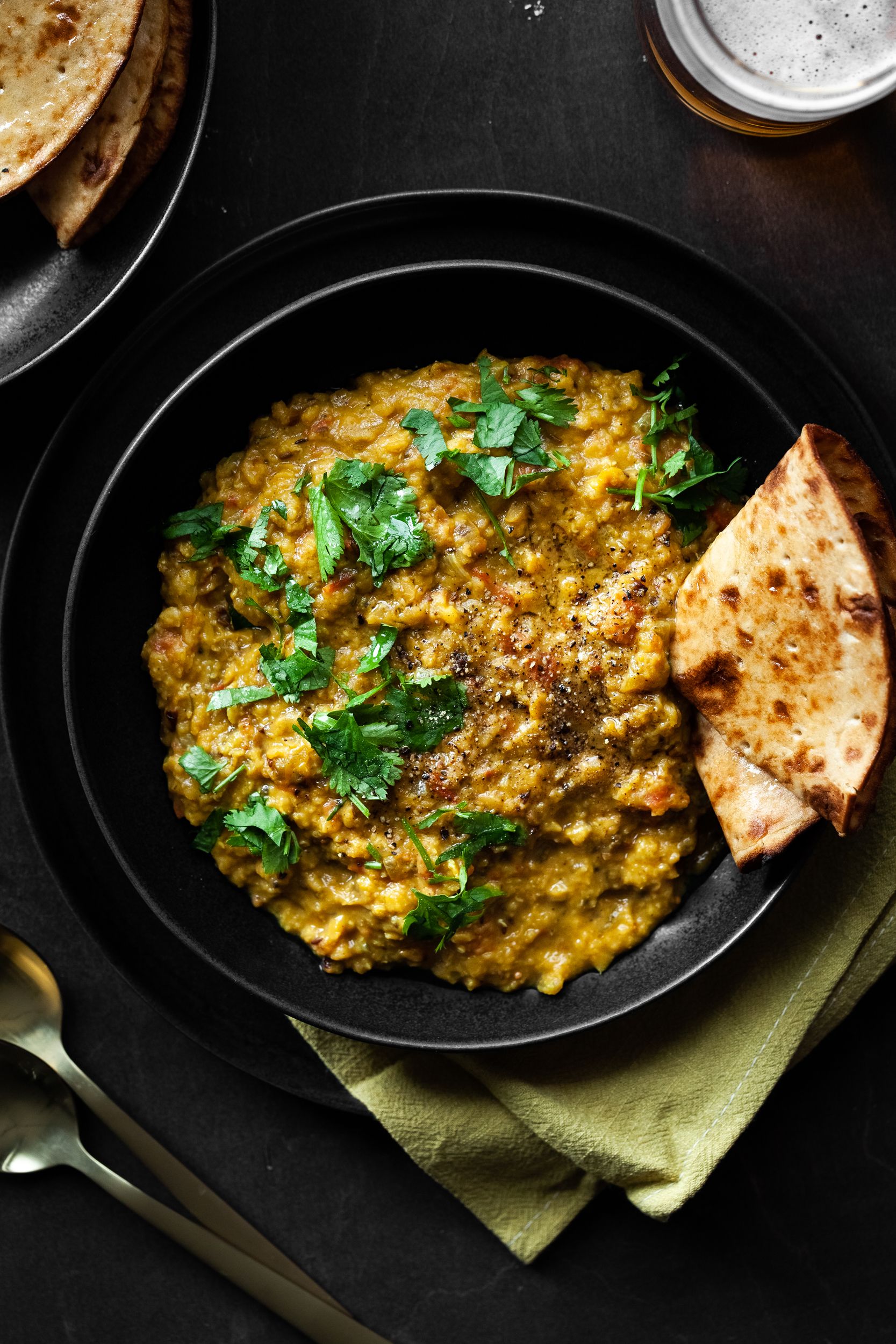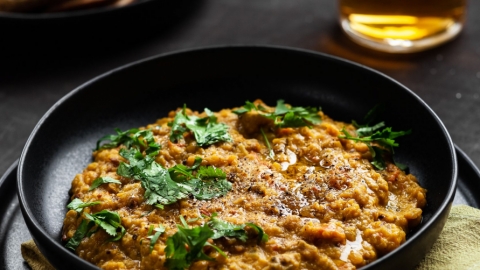Curry—A Comforting World of Flavour
“Aromatic and flavourfully spellbinding” could sum up my first experience with a curry dish. I left that Indian restaurant on Main Street on my 21st birthday filled with warmth and immense satisfaction; I reminisced about aloo gobi and chana masala for weeks. Thereafter, my love for curry grew and evolved to not only include dishes from India, but those from Thailand, Jamaica, Ethiopia and Japan—each distinctly flavourful and memorable.
Defining curry is a tall order; it can refer to either a blend of spices or a finished dish, yet there is no homogenous recipe, texture or flavour profile to it. The word is essentially a catchall associated with a global array of spiced, saucy foods (which may or may not contain curry powder). While the majority of curries were originally inspired by traditional Indian food, it must be said that there is no dish in India actually called “curry”—the term likely originates from the Tamil word “khari,” which European colonialists anglicized and used to generalize any stewed, spicy dish from the Indian subcontinent.
Curry is as much a blend of texture and flavour as it is a blending of culture and influence. The bold flavours inherent to curries from around the world were influenced not only by regional ingredients, but those acquired through colonization of India and the spice trade that ensued. The Mughal Empire brought saffron and other ingredients to India, while the Portuguese introduced chilies, black pepper and vinegar—key ingredients in vindaloos. With the arrival of the British came amplified spice trading and the creation of countless tempered Indian recipes to suit British palates (chicken tikka masala and jalfrezi, to name a few). The British later produced basic curry powders designed to mimic and simplify the complex flavours of Indian food, and curry houses popped up across England to satisfy a growing demand for the cuisine. British colonization, trade and immigration from India later brought new spices, curry powders and recipes to Asian, African and Caribbean countries, who created or adapted recipes into curry-style dishes of their own. In North America, curry is one of the most popular international foods available today.
It can vary in colour, texture and, most notably, taste, depending on where curry is served—from earthy to citrusy, floral or tangy with mild to intense heat. In short, British curries mostly resemble Indian madras—mild to hot red-coloured sauces, stewed meats or pulses with plenty of tomatoes, onions, garlic and ginger. Thai red, green and yellow curries, or gaengs, often include meat or seafood, basil, galangal, lemongrass, chilies and lime powder in a coconut milk broth. Malaysian penang and massaman curries share similarities with Thai curries, yet are often milder and sweeter. African and Caribbean recipes typically mimic those from Britain and India, but often contain more allspice, roasted cumin, paprika, or turmeric for its vibrant yellow colour. The anomaly are Japanese curries; though inspired by British curry, they tend to be much sweeter, milder and often feature mushroom powder.
Traditional Indian curry dishes are immensely varied. Generally, they start with a base of onions, meat, fish, cheese (paneer), vegetables or pulses and come in varying colours—red (makhanis), yellow (kormas), white (yakhnis) or green (nilgiris). Intricate spice blends, or masalas, are prepared from freshly ground spice whenever possible; however, powdered single spices are also widely used—coriander, cumin, saffron, fenugreek, cardamom, saffron, mustard seed, chilies, ginger, black pepper, garlic, asafoetida, tamarind and turmeric are some of the more prevalent ones. Whole spices are often fried first to release the fragrant oils into the dish, which add an additional depth of flavour that can’t be achieved with a curry powder alone.
With their comforting, stew-like texture, traditional Indian curries can be exceptionally enjoyable during the winter months. Tarka dal is a simple North Indian dish made from a base of red lentils and is flavoured with garam masala, a warming spice blend which includes cinnamon, cardamom, clove and black pepper, among others. If you wish to make your own, specialty shops across the Island will carry the individual spices needed for blending and grinding garam masala at home (a plethora of recipes exist online). Alternatively, Vancouver Island’s very own Dashka’s Gourmet Spices in Victoria, B.C., creates authentic, freshly ground Indian spice blends, which can be sourced online or at select retailers across the Island.






